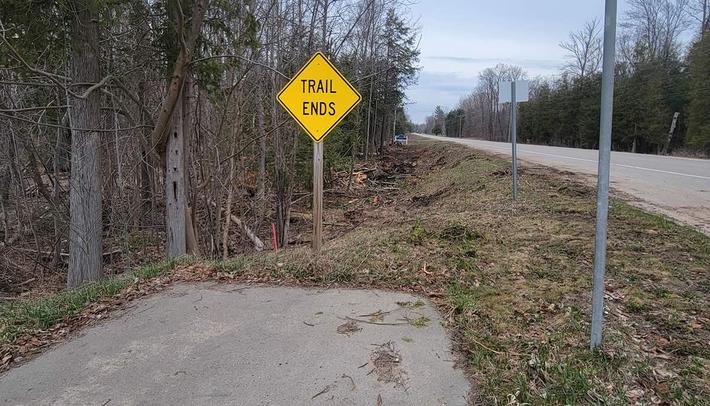
From Community Solutions to Systemic Challenges
Two TC counselors on the therapist shortage and how to connect instead of cope
By Ashlee Cowles | Nov. 4, 2023
Finding a therapist who is able to take on new clients in our post-pandemic landscape continues to be a challenge, and yet the need for mental health practitioners has never been so apparent.
The National Alliance on Mental Illness (NAMI) says one in five U.S. adults experience mental illness each year, but less than 50 percent of those folks receive treatment. Meanwhile, the National Council of Mental Wellbeing estimates people wait an average of six weeks for access to behavioral health services; the wait can be months for specialists. Many therapists have long waiting lists as the demand for mental health care grows.
But even if it takes a bit of searching and waiting to find the right therapist, reaching out is still worth the effort.
“Anybody can seek out therapy, anybody who feels stuck,” says Jessie Horness, a counselor and psychotherapist serving clients in northern Michigan.
The Human Experience
Horness insists that therapy isn’t just for those who feel like they are at the end of their frayed rope. As her mentor in grad school used to say, “Therapy is just consensual manipulation. You tell me where you want to go, and I just help you get there.”
Although she has pursued several healing professions, Horness initially went to school to become an actor. Thanks to this background, she developed an interest in “shifting state through storytelling” and notes that “storytelling is therapeutic in various cultures—including ours. We just forget.”
After studying yoga in India and considering rabbinical school, Horness returned to the idea of counseling and pursued a Masters of Arts in Clinical Mental Health Counseling.
“A theme for me is wanting to engage with people in the human experience and hold space for the human experience,” says Horness, who began counseling in 2020 and entered private practice in 2023.
Like many therapists, Horness starts the process with a consultation call to see if she and the client are a good fit. That means talking about reasons for entering therapy, goals for the future, and having a general sense of comfort and safety on both ends—requirements for digging into tough topics. She acknowledges that it is difficult to describe her ideal client because the things that make her a good fit with people tend to be more nebulous.
“But I can tell you where I do work where I’m really proud.”
That work tends to be with people who have intense personal experiences they don’t know how to reckon with. “My approach is about getting our capacity for feelings bigger, rather than making those feelings go away.”
Horness is also interested in zooming out beyond our internal experiences so her clients can look at systemic challenges and generational harm.
“Living under these conditions isn’t working.” Horness describes our society’s loss of deep connection and community, as well as the impact this has on mental health. “We are increasingly isolated and unable to reckon with our humanity…We’re told to be happy all the time, but we’re not given tools for the existential questions.”
Horness notes that most mental health trends we’re seeing right now existed well before the additional stressors of the pandemic, which merely exposed the full extent of the wound. “We are seeing it now,” she says, but people have been experiencing these challenges for a long time.
Rewriting the Narrative
Caroline Thomas, a licensed master social worker (LMSW) with Head and Heart Therapeutic Solutions in Traverse City, also recognizes the impact of systemic trauma. She says the current shortage of mental health professionals is spurring the field to move from an individualistic perspective to more holistic care.
“What we’re facing now is that we can’t solve all the problems impacting people’s mental health on a one-to-one level.”
As an example of this, Thomas notes that the experience of discrimination—whether it’s racism, fatphobia, or misogyny—is the single most significant pre-existing condition for physical and mental health issues.
“I’m not going to be able to ‘cure’ the fact that you’re experiencing racism with coping skills,” she says. “I’m not going to be able to teach you the right way to think about something and mindfully cope with the housing shortage.”
Part of Thomas’s approach is helping her clients view symptoms not as evidence that “something is wrong with me,” but as a normative response to frightening occurrences taking place in our world—things like a global pandemic and climate change.
“We can’t talk or think our way out of the physical experience of emotions and must honor the way the body holds and responds to stress and trauma,” says Thomas, who mentions Parts Work, EMDR (eye movement desensitization and reprocessing) therapy, yoga, tapping, and mindfulness techniques as ways practitioners are pursuing holistic care that puts the body and nervous system at the center of treatment.
Thomas grew up in northern Michigan and had an experience with a phenomenal social worker at East Middle School, which made her aware of the profound impact mental health practitioners can have on people’s lives. From an early age, Thomas knew she was going to pursue a care profession of some sort.
“I’ve always been really curious about people,” she says.
Thomas works primarily with adults from late adolescence through all life stages. “I talk about myself as a trauma therapist, but I think trauma is pretty all-encompassing. A lot of what we experience as anxiety is really that somewhere along the way, we learned that we’re not safe or not good enough, and then we have symptoms of anxiety as a result of that trauma.”
Thomas’s end goal is helping her clients excavate where their beliefs and symptoms began so they can rewrite a narrative that is a lot more self-compassionate.
Compassion and Community
If you’re feeling stuck while waiting for a therapist to have an opening in their schedule, what can you do in the meantime? Thomas and Horness each offered a few straightforward—though not easy—tips.
Thomas says self-compassion is essential. “We can be so hard on ourselves, and people often don’t notice their self-talk, but it can get really cruel.” Whether that self-talk comes out as shame or comparing yourself to other people, Thomas recommends getting really curious about our self-talk and other symptoms in a non-judgmental way.
As soon as we begin to notice what is happening in our body, Thomas says we create a little space from that experience, which enables us to not be completely consumed by it.
Both Thomas and Horness also stress the importance of seeking out an in-person community made up of people who share your intentional values, even if that is something as simple as finding a group of friends you go walking with once a week. Much of the time it isn’t more self-care that we need, but more connection.
Horness notes the importance of community activities that were once commonplace in most societies but that have become less frequent in our isolated age. Holding community dinners at her house for Shabbat, for example, has ended up being one of the most enriching things Horness has done to cultivate more connection, and it’s helped her fight isolation in ways she hadn’t anticipated.
And last but not least…stop checking Facebook.
“Definitely get off social media as soon as possible,” adds Thomas. “If I could wave a magic wand…” Abandoning these dopamine-releasing apps may be easier said than done, but she believes it can make a huge difference.
Trending

Walking in an Artsy Wonderland
Michigan Legacy Art Park is hosting the “Raindrops” artwork created by Dewey Blocksma and Patricia Innis at th... Read More >>
Seven Takeaways from Local Real Estate Agents for the Spring/Summer Market
The last few years in local real estate have been akin to what one local agent described as the “wild west,” w... Read More >>
Blazing the Boyne City to Charlevoix Trail
We’re getting ever closer to an interconnected northern Michigan thanks to ongoing work on the Boyne City to Charlev... Read More >>


